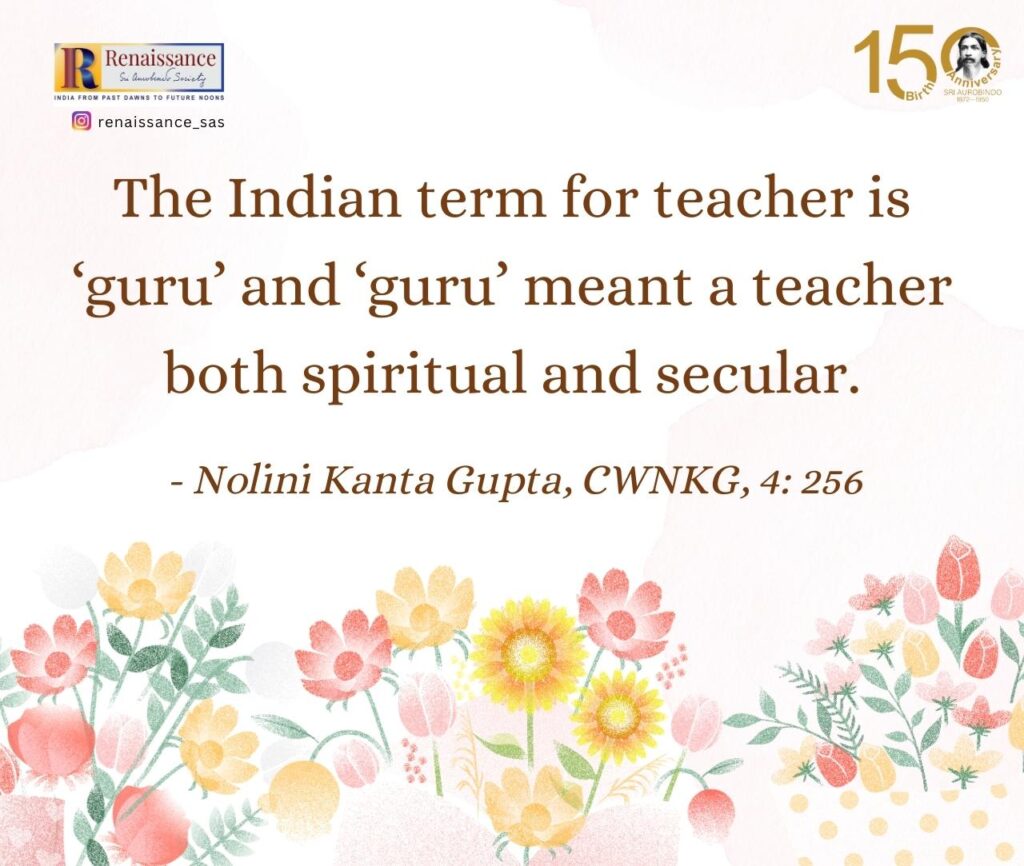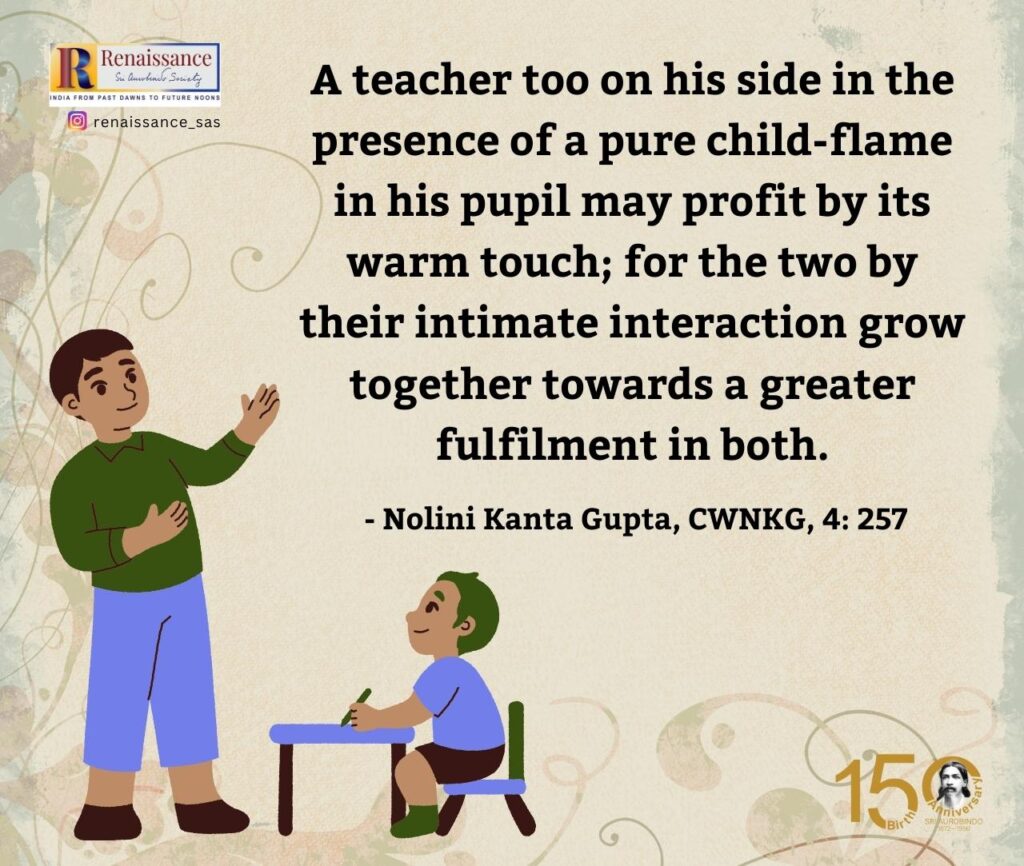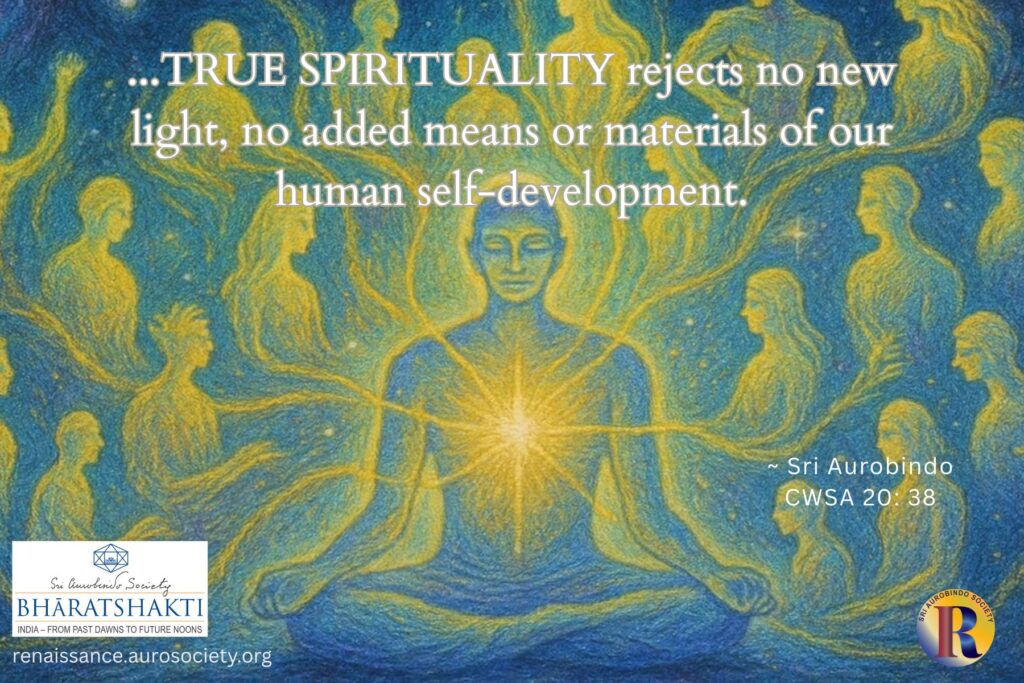Volume III, Issue 10
Author: Nolini Kanta Gupta
Editor’s Note: Nolini Kanta Gupta’s article originally titled ‘A True Professor’ elaborates upon the Mother’s statement that a true teacher must be a yogi. He explains that when a teacher has a deeper aspiration and a happy luminous consciousness, his intimate interaction with the pupil will help both of them grow together towards greater fulfilment. This is excerpted from Volume 4 of the author’s collected works.

The Mother says a professor, a true professor, must be truly a yogi. That is to say, a teacher, even a school teacher, one imparting what is called secular education, has to be nothing less than a yogi.
One must be a saint and a hero to be a good teacher. One must be a great yogi to be a good teacher. One must have a perfect attitude to be able to exact a perfect attitude from the students.
~ The Mother, CWM, Vol. 8, p. 354
The Indian term for teacher is ‘guru’ and ‘guru’ meant a teacher both spiritual and secular.
This distinction of the two words is made by the modern spirit, it did not belong to the ancient culture. The secular knowledge was also considered a necessary part of the spiritual knowledge, that which prepared for it and led towards it. The ‘apara vidya’ or the ‘Vedānga’ were but limbs of the supreme knowledge ‘para vidya’ and ‘Veda’.
A teacher has to be a yogi does not mean that he is to be a paragon of moral qualities, following, for example, the ten commandments scrupulously. Not to tell a lie, not to lose temper, to be patient, impartial, to be honest and unselfish, all these more or less social qualities have their values but something else is needed for the true teacher, something of another category and quality. I said social qualities, I might say also mental qualities.
The consciousness of the teacher has to be other than mental, something deeper, more abiding, more constant, less relative, something absolute.
Do we then prescribe the supreme Brahma-consciousness for the teacher? Not quite.
We mean the consciousness of a soul, the living light that is within every aspiring human being. It is a glad luminousness in the heart that can exist with or without the brilliant riches of a cultivated brain. And one need not go so far as the Vedantic Sachchidananda consciousness. That is the first and primary necessity.
* * *

Read:
Why a New Education for Future: Words of the Mother
When the teacher approaches the pupil, he must know how to do it in and through that inner intimate consciousness. It means a fundamental attitude, a mode of being of the whole nature rather than a scientific procedure: all the manuals of education will not be able to procure you this treasure.
It is an acquisition that develops or manifests spontaneously through an earnest desire, that is to say, aspiration for it. It is this that establishes a strange contact with the pupil, radiates or infuses the knowledge, even the learning that the teacher possesses, infallibly and naturally into the mind and brain of the pupil. Books and programmes are of secondary importance, they are only a scaffolding, the building within is made of a different kind of bricks.
Intimate interaction between the aspiration in a teacher and pupil
A happy luminous consciousness within is the teacher’s asset, with that he achieves all; without it he fails always.
If the teacher is to be a yogi, the pupil on his side must be at least an aspirant.
But I suppose a pupil, so long as he is a child, is a born aspirant. For, as the Mother says, a child’s consciousness retains generally something of the pure inner consciousness for sometime at least until it is overshadowed by the development of the body and the mind in the ordinary normal way.
Something of this, we know, has been expressed in the famous lines of the visionary English poet:
Our birth is but a sleep and a forgetting;
~ Wordsworth: Ode on the Intimations of Immortality from Recollections of Early Childhood
The Soul that rises with us, our life’s Star,
Hath had elsewhere its setting
And cometh from afar;
Not in entire forgetfulness,
And not in utter nakedness,
But trailing clouds of glory do we come
From God, who is our home:
Heaven lies about us in our infancy!
Shades of the prison-house begin to close
Upon the growing Boy,

* * *
But if the right teacher is found, that pure flame in the child’s consciousness can be kept burning, can even be made to burn brighter and higher.
A teacher too on his side in the presence of a pure child-flame in his pupil may profit by its warm touch; for the two by their intimate interaction grow together towards a greater fulfilment in both.
When we speak or think of education and consider the relation of the teacher and the pupil, we generally confine ourselves to the mental domain, that is to say, aim wholly or mainly at the intellectual acquisition and attainment, and only sometimes as per necessity as it were we turn at most to the moral domain, that is to say, we look for the growth of character, of good manners and behaviour – social values as we have said. Here we have tried to bring into the educationist’s view a more important, a much more important and interesting domain – a new dimension of consciousness.
– Nolini Kanta Gupta (CWNKG, Vol. 4, pp. 256-258)
Also Read:
What Matters is the Consciousness with Which You Teach

~ Design: Raamkumar



